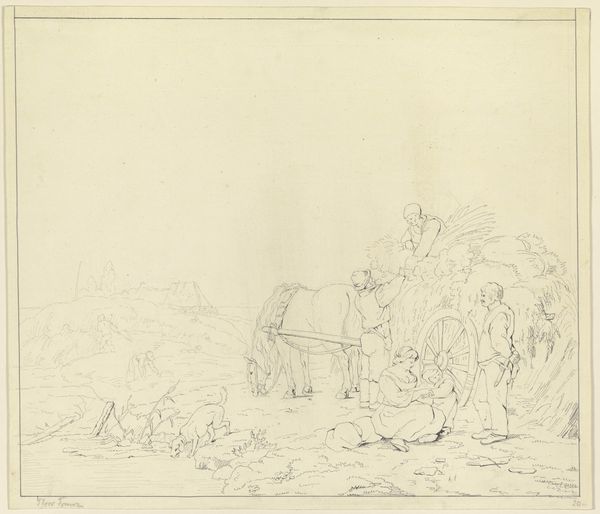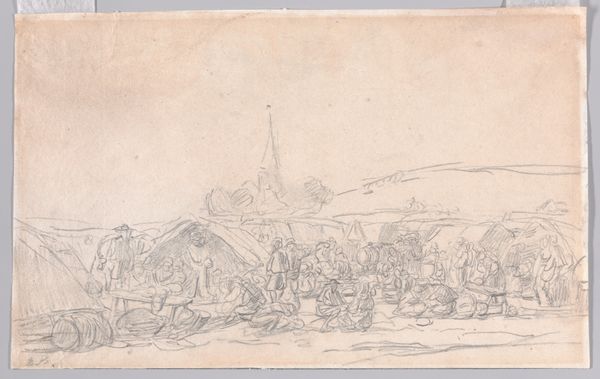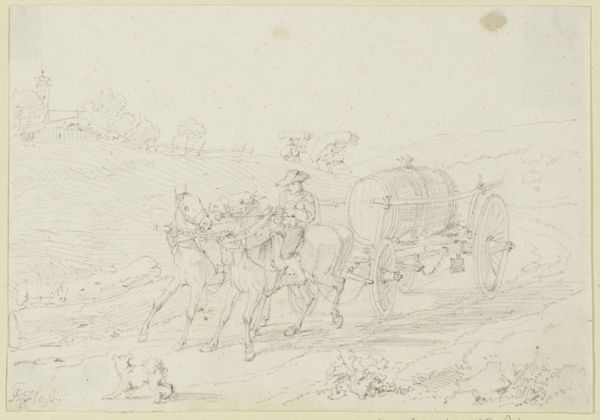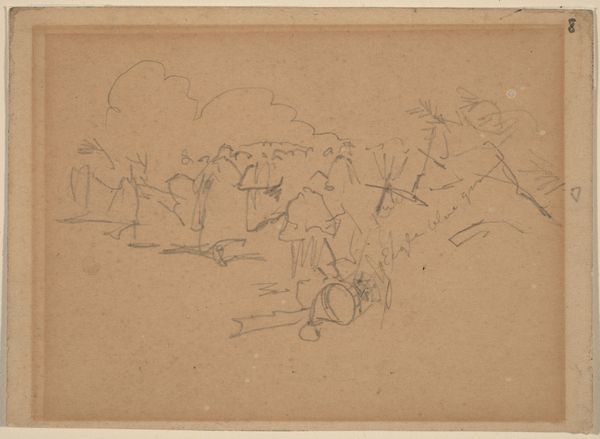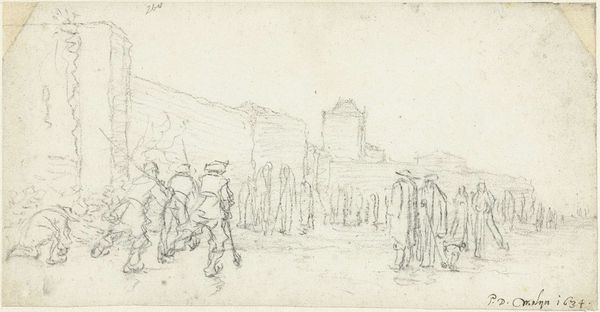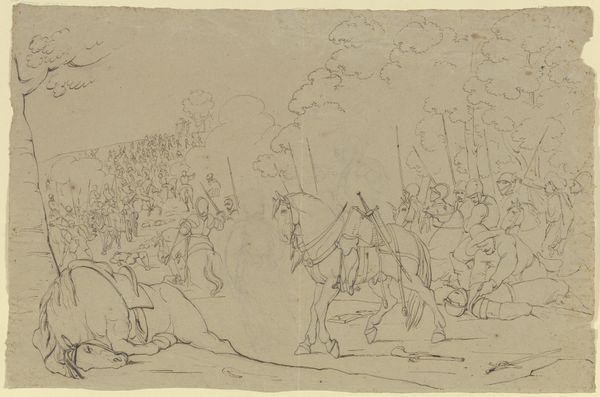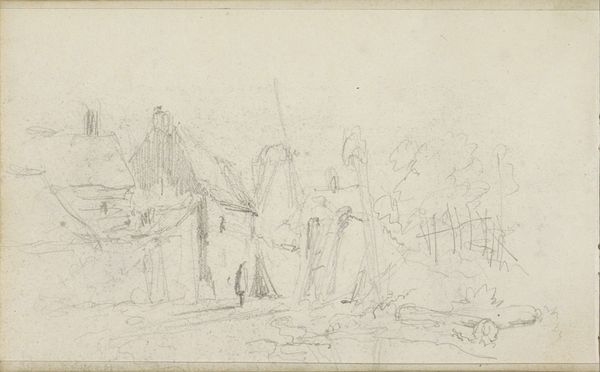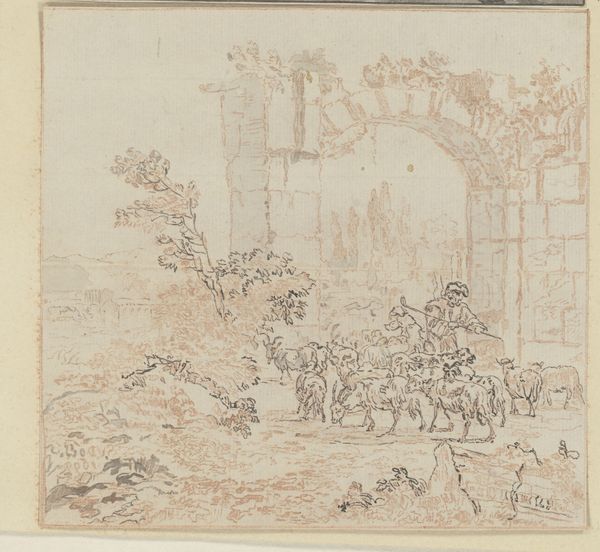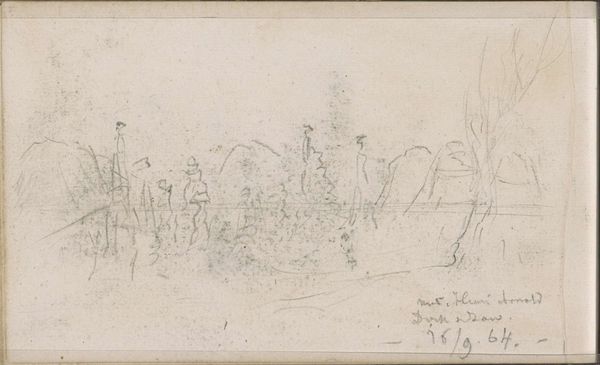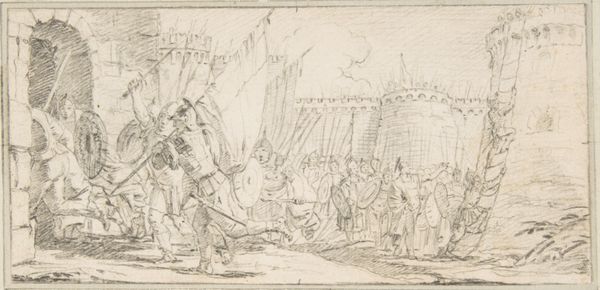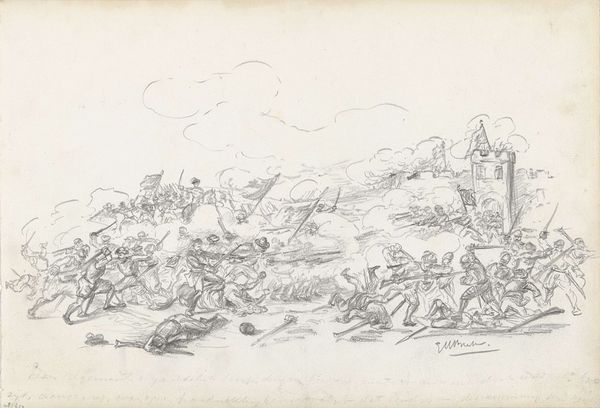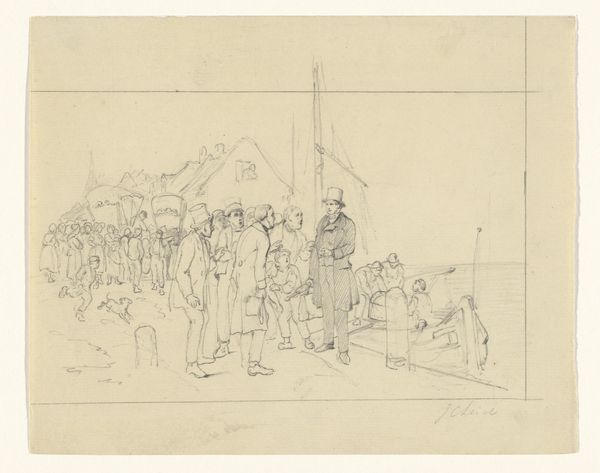
drawing, pencil, architecture
#
drawing
#
landscape
#
figuration
#
11_renaissance
#
pencil
#
architecture
Copyright: Public Domain
Curator: What an interesting drawing, no? It depicts the Siege of a Castle, by Franz Pforr. Editor: There’s an ephemeral quality to this pencil drawing; so faint it feels like it could vanish with a breath. You can almost feel the graphite against the paper and consider the pressure exerted by the artist's hand. Curator: Yes, the fragility echoes the nature of sieges, where fortunes turn on a thread. Notice how the castle looming in the background – the apex of power, defense, and social structure – becomes a mere symbol against the implied onslaught. What does it say about the psychology of conflict? Editor: And what kind of pencil did he use to achieve this? The grain of the paper is quite visible. I imagine Pforr had a very specific quality of materials in mind as he brought his mental image into reality. I mean, think about the labour behind creating each of the tiny metal or lead parts comprising the tools of the draughtsman! Curator: The composition, too, is key; that looming castle suggests not just physical strength, but also an established order. In terms of symbolism, consider the implications of its height and presumed inaccessibility against the dynamic movement on the ground. Editor: This leads me to wonder more about his process and whether he built his drawing through iterative layers, adding graphite gradually as opposed to bold definite lines, in keeping with a style which has become the hallmark of the Renaissance. Curator: The rendering almost seems to evoke the anxieties of societal disruption inherent to the Renaissance era—questioning authority, the destabilizing shifts in knowledge and power. It brings forth contemplations on human action against enduring, unchanging structures. Editor: For me, it is a study in tonal possibility, achieved with very simple, grounded materials. It encourages contemplation regarding the physical means which lead to great expressive capability, Curator: Agreed; it provides such subtle commentaries on a period marked by immense upheavals. Editor: Yes, a poignant testament in pencil and paper.
Comments
No comments
Be the first to comment and join the conversation on the ultimate creative platform.
